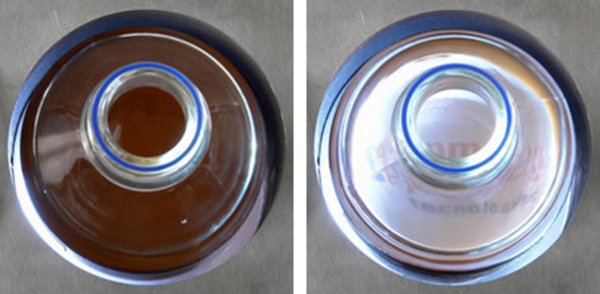Biomagnetic separation techniques are faster, cheaper and easier to use than non-magnetic techniques. In addition, when a magnetic separation process is performed under homogenous conditions, these techniques are also scalable and easily validated.
In general, life science companies have great expertise in coating (mostly non-magnetic) beads and surfaces. They attach biomolecules, DNA, etc. to surfaces easily. Production teams will have much experience setting up the process to attach these biomolecules to magnetic beads because the technologies are very similar to attaching to non-magnetic microspheres or other surfaces.
This post is about biomagnetic separation in the production of magnetic beads for IVD kits. If you want to know its most important elements, download our free ebook The basic guide to use biomagnetic separation in production processes:
Non-magnetic beads vs. magnetic beads
When using non-magnetic beads for attachment, the separation processes includes centrifugation and filtration (either classic or tangential filtration) in order to separate the solids and discarding the dirty supernatant. One then washes with clean buffers several times to gain the final product. Anyone in the lab can tell you about the problems of these techniques:
- When using classic filtration techniques filters can clog and the performance of the filters vary with time and usage.
- When using tangential filtration techniques the warm-up time can take hours and it is difficult to establish the best balance between flow, temperature and pressure.
- When using centrifugation, resuspending the centrifuged solids can be a very dirty job and maintenance of the centrifuge is very costly.
If the beads are magnetic, however, the use of biomagnetic separation systems provides a sound alternative:
- Quick process (just a few minutes)
- Clean (no buffers or filters to change)
- No maintenance because there are no moving parts
- No costs associated with running a device that uses permanent magnets
The main drawback in biomagnetic separation is the lack of control over the process. Standard magnetic separators do not have well-defined conditions. With the more classic separation techniques listed above, you can define the parameters of the processes well, but with a standard biomagnetic separator only the time of separation associated with a specific device is typically noted as a variable in the process.
But with modern homogenous biomagnetic separation systems such as SEPMAG, separation conditions are known and can be reproduced regardless of the volume. This allows you to not only take advantage of the typical benefits of biomagnetic separation (i.e. ease of separation and cost advantages), but also allows you to easily validate and scale up the process.
If you found this post about using biomagnetic separation for production useful, don't forget to check these related posts:
- Perfecting the magnetic separation process in magnetic bead IVD kit production
- The Use of Biomagnetic Separation in Production Processes
- How to Guarantee Lot-to-Lot Consistency in Biomagnetic Separation
Check www.sepmag.eu/ebooks to access to FREE eBooks on the subject, or contact us. We will be glad to help you to achieve an efficient magnetic bead separation process!





